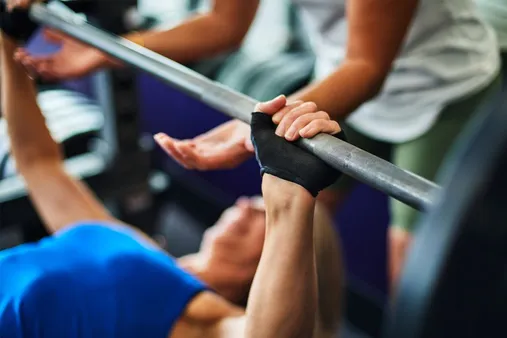Table of Contents
Embark on a transformative calisthenics journey with Kizworld, your trusted guide to unlocking your fitness potential. As you delve into this comprehensive exploration of The most common calisthenics mistakes and how to fix them, you'll discover insights into avoiding pitfalls and maximizing your progress. From the importance of warming up properly to the art of listening to your body, this guide equips you with the knowledge and strategies to achieve your calisthenics goals safely and effectively.
The Most Common Calisthenics Mistakes and How to Fix Them
I. The Most Common Calisthenics Mistakes
Mistake 1: Not Warming Up Properly
Warming up before a calisthenics workout is crucial to prepare your body for the intense movements and prevent injuries. A proper warm-up should include dynamic stretches, light cardio, and activation exercises to increase blood flow and muscle temperature. Skipping the warm-up can lead to muscle strains, joint pain, and reduced performance.
- Related Post: How to Warm Up Properly for a Calisthenics Workout
- Related Post: The Benefits of Warming Up Before a Calisthenics Workout
Mistake 2: Ignoring Proper Form
Maintaining proper form during calisthenics exercises is essential to target the correct muscles, prevent injuries, and maximize progress. Rushing through exercises or using incorrect techniques can lead to muscle imbalances, joint pain, and reduced effectiveness. Focus on controlled movements, engage the core, and maintain a neutral spine to ensure proper form.
- Related Post: The Importance of Proper Form in Calisthenics
- Related Post: How to Improve Your Calisthenics Form
Mistake 3: Overtraining
Overtraining is a common mistake among calisthenics enthusiasts who push themselves too hard without adequate rest and recovery. Excessive training can lead to burnout, decreased performance, and increased risk of injuries. Listen to your body, take rest days, and incorporate active recovery activities to promote muscle recovery and prevent overtraining.
- Related Post: The Dangers of Overtraining in Calisthenics
- Related Post: How to Avoid Overtraining in Calisthenics
Mistake 4: Not Progressing Gradually
Calisthenics requires patience and gradual progression to avoid plateaus and injuries. Attempting advanced exercises too soon or increasing the intensity too quickly can lead to frustration and setbacks. Start with beginner-level exercises, master the basics, and gradually progress to more challenging variations as you build strength and skill.
- Related Post: The Importance of Gradual Progression in Calisthenics
- Related Post: How to Create a Calisthenics Progression Plan
Mistake 5: Neglecting Nutrition and Hydration
Proper nutrition and hydration are essential for optimal calisthenics performance and recovery. Consuming a balanced diet rich in protein, carbohydrates, and healthy fats provides the body with the necessary nutrients to build muscle, repair tissues, and fuel workouts. Staying hydrated helps regulate body temperature, lubricate joints, and prevent fatigue. Neglecting nutrition and hydration can hinder progress and increase the risk of injuries.
- Related Post: The Importance of Nutrition and Hydration for Calisthenics
- Related Post: What to Eat Before, During, and After a Calisthenics Workout
Mistake 6: Not Listening to Your Body
Listening to your body's signals is crucial in calisthenics to prevent injuries and optimize progress. Pushing through pain or ignoring signs of fatigue can lead to serious consequences. Pay attention to your body's needs, take breaks when necessary, and adjust your workout intensity accordingly. Rest and recovery are essential components of a well-rounded calisthenics routine.
- Related Post: The Importance of Listening to Your Body in Calisthenics
- Related Post: How to Avoid Injuries in Calisthenics
Mistake 7: Comparing Yourself to Others
Comparing yourself to others in calisthenics can be demotivating and counterproductive. Everyone progresses at their own pace, and comparing your journey to someone else's can lead to feelings of inadequacy and discouragement. Focus on your own progress, celebrate your achievements, and strive to be the best version of yourself. Remember, calisthenics is a personal journey, not a competition.
- Related Post: The Dangers of Comparing Yourself to Others in Calisthenics
- Related Post: How to Stay Motivated in Calisthenics
Mistake 8: Getting Discouraged
Discouragement is a common challenge in calisthenics, especially when progress seems slow or plateaus are encountered. It's important to remember that progress is not always linear, and setbacks are a natural part of the journey. Stay persistent, stay focused on your goals, and keep pushing forward. Celebrate your small victories along the way, and don't let temporary setbacks discourage you from continuing your calisthenics practice.
- Related Post: How to Overcome Discouragement in Calisthenics
- Related Post: The Power of Perseverance in Calisthenics
II. The Most Common Calisthenics Mistakes and How to Fix Them
III. Mistake 1: Not Warming Up Properly
Improper warm-up
Warming up before a calisthenics workout is crucial to prepare your body for the intense movements and prevent injuries. However, many individuals neglect this essential step or perform an inadequate warm-up, which can hinder their progress and increase the risk of strains, sprains, and other issues. This section delves into the importance of a proper warm-up and provides practical tips to ensure you're adequately prepared for your calisthenics routine.
To effectively warm up, start with light cardio exercises such as jogging, jumping jacks, or brisk walking for 5-10 minutes. This elevates your heart rate and increases blood flow to your muscles, preparing them for the upcoming workout. Follow this with dynamic stretches that target the major muscle groups involved in calisthenics, such as the shoulders, chest, back, hips, and legs. Hold each stretch for 10-15 seconds and repeat for 2-3 sets. Dynamic stretches involve active movements that mimic the motions you'll be performing during your workout, helping to improve flexibility and range of motion.
In addition to physical warm-up, it's also important to mentally prepare yourself for the workout. Take a few moments to focus on your breath and clear your mind. Visualize yourself performing the exercises with proper form and technique. This mental preparation can help you stay focused and motivated throughout your workout.
By following these simple warm-up tips, you can significantly reduce your risk of injury and improve your overall performance in calisthenics. Remember, a proper warm-up is an investment in your long-term health and fitness journey.
- Benefits of warming up before a calisthenics workout
- How to perform a proper warm-up
- Importance of dynamic stretches
- Mental preparation for a calisthenics workout
Learn more about the most common calisthenics mistakes and how to fix them
Mistake 2: Ignoring Proper Form
Proper form is the foundation of safe and effective calisthenics training. Neglecting proper form can lead to muscle imbalances, joint pain, and increased risk of injury. When performing calisthenics exercises, focus on maintaining a neutral spine, engaging your core, and using controlled movements. Avoid swinging or jerking your body to complete repetitions, as this can put excessive stress on your joints and muscles.
To improve your form, start by learning the basic movements and progressions for each exercise. Gradually increase the difficulty as you become more comfortable with the technique. It's also helpful to have a spotter or coach observe your form and provide feedback. Additionally, consider incorporating mobility and flexibility exercises into your routine to improve your range of motion and reduce the risk of injury.
By prioritizing proper form, you can maximize the benefits of calisthenics training and minimize the risk of setbacks. Remember, it's better to progress slowly with good form than to rush through exercises with poor technique.
Benefits of proper form in calisthenics | How to improve your form | Importance of mobility and flexibility exercises |
|---|---|---|
Reduced risk of injury | Learn basic movements and progressions | Improved range of motion |
Improved muscle activation | Have a spotter or coach observe your form | Reduced risk of muscle imbalances |
Increased strength and power | Incorporate mobility and flexibility exercises | Improved overall performance |
Learn more about the most common calisthenics mistakes and how to fix them
IV. Incorrect form
Incorrect form
One of the most common calisthenics mistakes is using incorrect form. This can lead to injuries and hinder your progress. To avoid this, it's crucial to learn the proper form for each exercise and practice it consistently. Refer to our comprehensive guide on mastering basic gymnastics skills for detailed instructions and tips.
Here are some tips for maintaining proper form during calisthenics exercises:
- Keep your core engaged and your back straight.
- Use a full range of motion.
- Control the movement throughout the entire exercise.
- Don't swing or jerk your body.
- Listen to your body and stop if you feel pain.
By following these tips, you can minimize the risk of injury and maximize the benefits of calisthenics.
Mistake | How to Fix It |
Incorrect form | Learn the proper form for each exercise and practice it consistently. |
Overtraining | Listen to your body and take rest days when needed. |
Ignoring nutrition and hydration | Eat a healthy diet and drink plenty of water. |
Not progressing gradually | Start with easier exercises and gradually increase the difficulty as you get stronger. |
Comparing yourself to others | Focus on your own progress and don't compare yourself to others. |
Remember, calisthenics is a journey, not a race. Be patient, stay consistent, and enjoy the process of improving your strength, flexibility, and overall fitness.
V. Overtraining
Overtraining
It's easy to get caught up in the excitement of calisthenics and start pushing yourself too hard. However, overtraining can lead to a number of problems, including:
- Increased risk of injury
- Decreased performance
- Burnout
- Overtraining can be caused by a number of factors, including:
Training too frequently
- Doing too much volume (number of sets and reps)
- Not allowing enough time for recovery
- Not getting enough sleep
- Not eating a healthy diet
If you're starting to feel run down or are experiencing any of the symptoms listed above, you may be overtraining. It's important to listen to your body and take a step back if you need to. Overtraining can set you back in your progress, so it's important to avoid it. Exercise is meant to be enjoyed, so make sure you're having fun while you're working out and not pushing yourself too hard.
Symptom | Possible Cause |
|---|---|
Fatigue | Not recovering from workouts |
Loss of appetite | Overtraining |
Increased resting heart rate | Overtraining |
Decreased sleep quality | Overtraining |
VI. Neglecting rest and recovery
Neglecting rest and recovery
One of the most common mistakes calisthenics athletes make is neglecting rest and recovery. This can lead to a number of problems, including injuries, burnout, and poor performance. When you work out, you are essentially breaking down your muscles. In order to repair and grow stronger, your muscles need time to rest and recover. If you don't give your muscles enough time to recover, you're more likely to get injured. You're also more likely to experience burnout, which can lead to a loss of motivation and a decrease in performance.
To avoid these problems, it's important to make sure you're getting enough rest and recovery. This means taking at least one day off from calisthenics each week. It also means getting 7-8 hours of sleep each night. Additionally, you should make sure you're eating a healthy diet that includes plenty of fruits, vegetables, and whole grains. By following these tips, you can help ensure that you're getting the most out of your calisthenics workouts.
How to get enough rest and recovery
- Take at least one day off from calisthenics each week.
- Get 7-8 hours of sleep each night.
- Eat a healthy diet that includes plenty of fruits, vegetables, and whole grains.
- Listen to your body and take breaks when you need them.
- Do active recovery activities, such as yoga or swimming, on your rest days.
By following these tips, you can help ensure that you're getting the most out of your calisthenics workouts and avoiding the negative consequences of neglecting rest and recovery.
If you're new to calisthenics, it's important to start slowly and gradually increase the intensity and duration of your workouts over time. This will help you avoid injuries and burnout. It's also important to listen to your body and take breaks when you need them. If you're feeling pain, stop the exercise and rest. Pushing yourself too hard can lead to injuries.
Calisthenics is a great way to get in shape and improve your overall health. However, it's important to avoid the common mistakes that can lead to injuries, burnout, and poor performance. By following the tips in this article, you can help ensure that you're getting the most out of your calisthenics workouts and achieving your fitness goals.
Here are some additional tips for getting enough rest and recovery:
- Create a workout schedule that allows for adequate rest days.
- Listen to your body and take breaks when you need them.
- Get a massage or take a bath to help your muscles recover.
- Eat a healthy diet that includes plenty of fruits, vegetables, and whole grains.
- Get enough sleep.
By following these tips, you can help ensure that you're getting the most out of your calisthenics workouts and avoiding the negative consequences of neglecting rest and recovery.
If you're looking for more information on calisthenics, check out our other articles on the topic:
- How to Build Muscle and Strength with Calisthenics
- The Benefits of Calisthenics for Bodyweight Training
- The Best Calisthenics Equipment and Gear
VII. Lack of progression
One of the most common mistakes calisthenics beginners make is not progressing gradually. They start with too difficult exercises and then get discouraged when they can't do them. This can lead to them giving up on calisthenics altogether. To avoid this, it's important to start with easy exercises and gradually work your way up to more difficult ones. This will help you build strength and confidence, and it will make the progression process more enjoyable.
Here are some tips for progressing gradually in calisthenics:
- Start with easy exercises that you can do with good form.
- Focus on mastering the basics before moving on to more advanced exercises.
- Increase the difficulty of your workouts gradually by adding more repetitions, sets, or weight.
- Listen to your body and take rest days when you need them.
- Don't compare yourself to others. Everyone progresses at their own pace.
By following these tips, you can avoid the mistake of not progressing gradually and you can set yourself up for success in calisthenics.
Exercise | Difficulty | Benefits |
Bodyweight squats | Easy | Builds lower body strength and mobility |
Push-ups | Easy | Builds upper body strength and endurance |
Lunges | Easy | Builds lower body strength and balance |
Rows | Easy | Builds back strength and posture |
Plank | Easy | Builds core strength and stability |
"The key to progression in calisthenics is to be patient and consistent. Don't try to do too much too soon, and don't get discouraged if you don't see results immediately. Just keep at it, and you will eventually reach your goals."
If you're looking for a more structured approach to progressing in calisthenics, there are many resources available online and in libraries. You can also find calisthenics classes and workshops in many cities.
With a little effort and dedication, you can overcome the mistake of not progressing gradually and achieve your calisthenics goals.
Here are some related posts that you may find helpful:
- The Best Calisthenics Exercises and Variations
- How to Learn the Basic Calisthenics Skills and Progressions
- The Top Calisthenics Competitions and Challenges
VIII. Conclusion
By addressing these common calisthenics mistakes, you can optimize your workouts, minimize the risk of injury, and accelerate your progress towards achieving your fitness goals. Remember, calisthenics is a journey, not a race. Embrace the process, stay consistent, and enjoy the transformative power of bodyweight training. With dedication and the right approach, you can unlock your full potential and conquer the world of calisthenics.